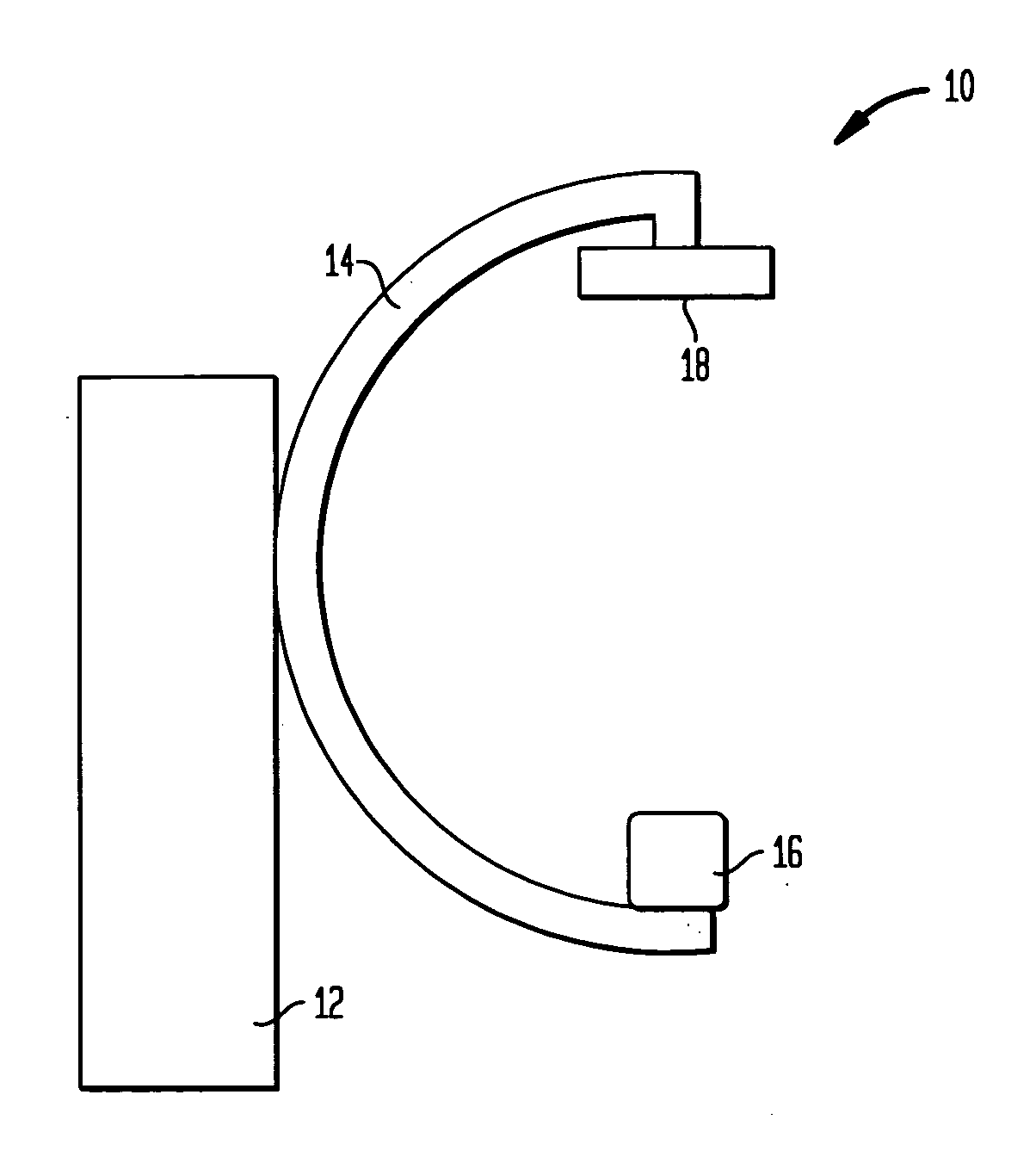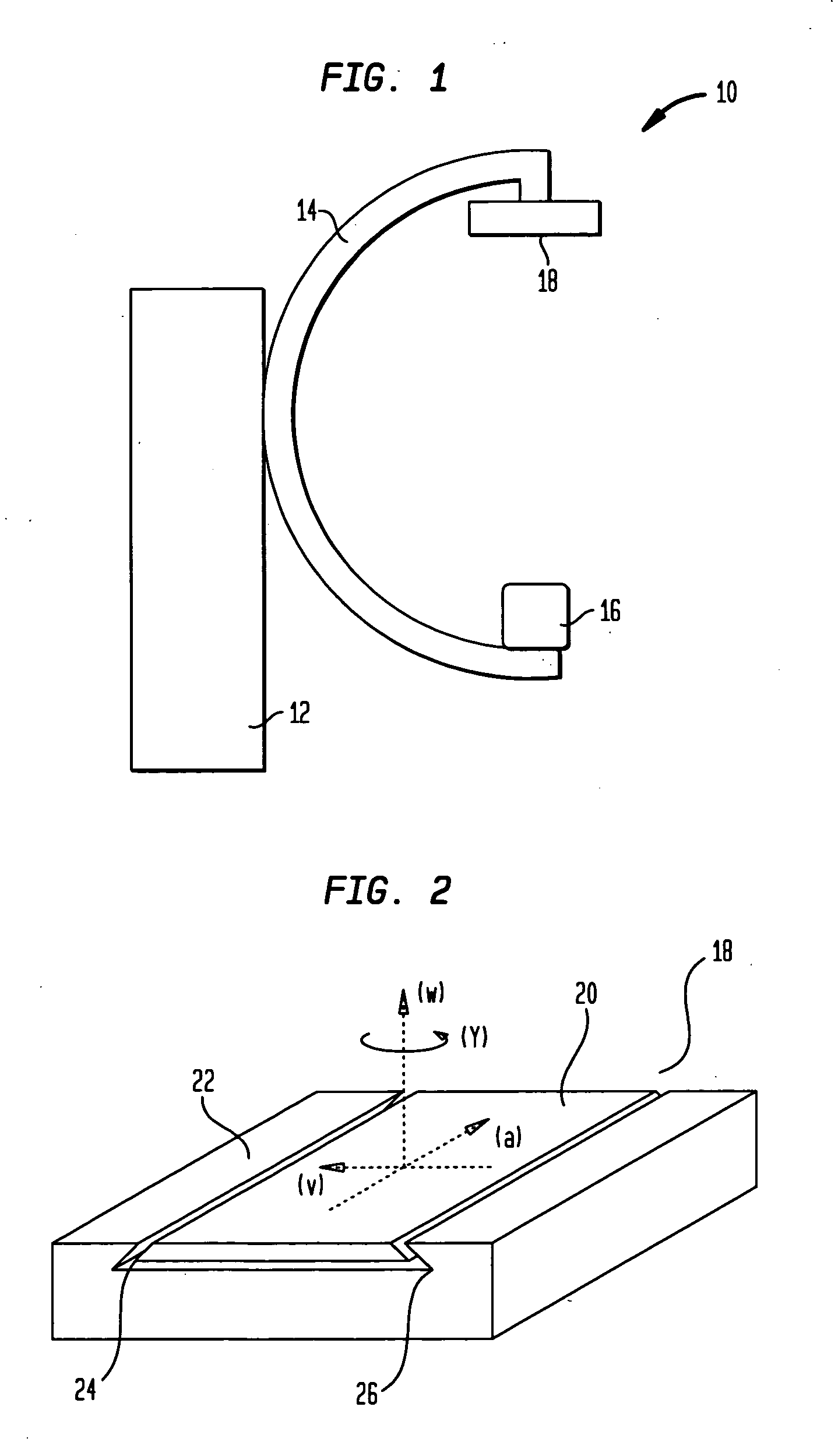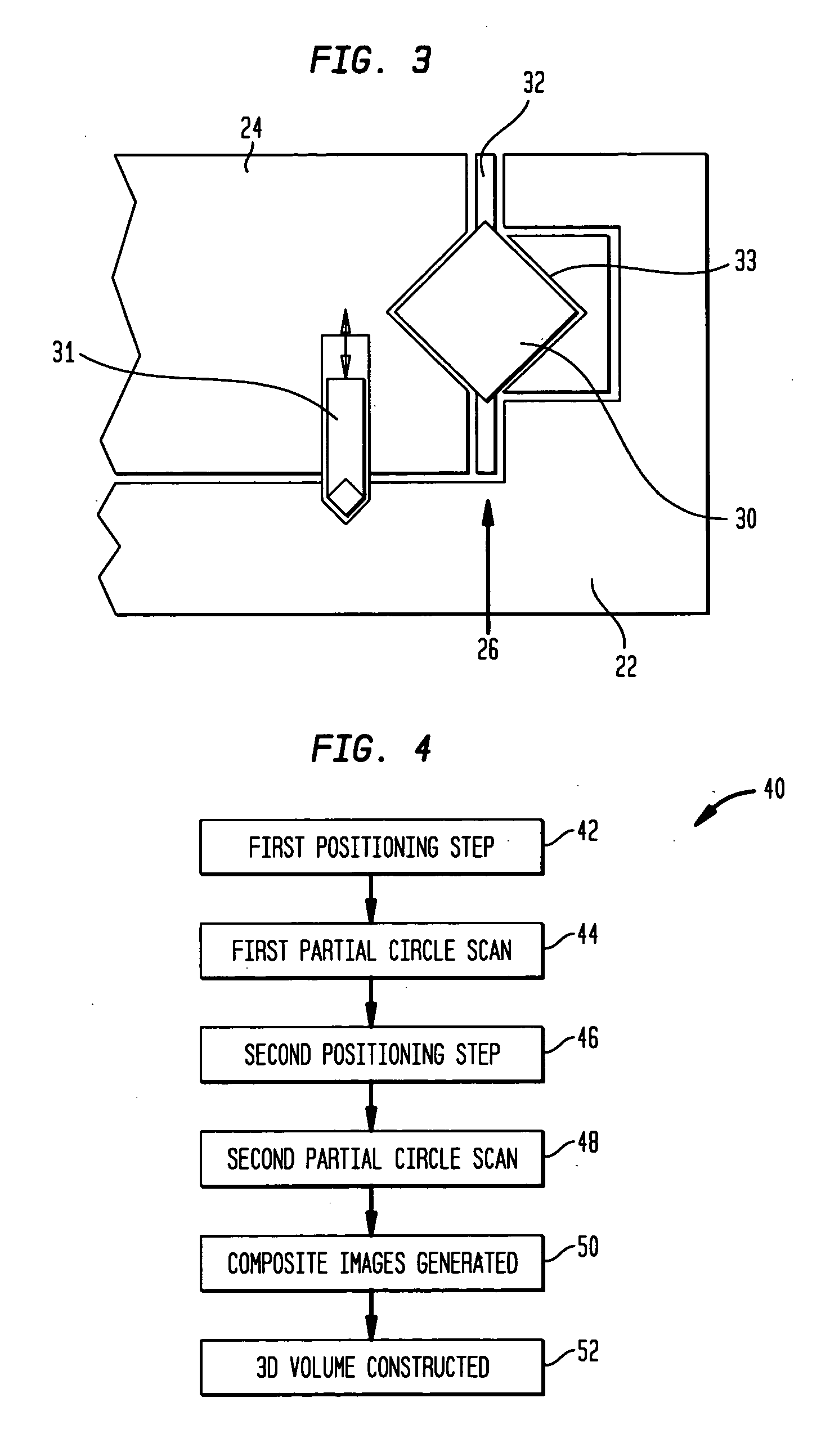C-arm device with adjustable detector offset for cone beam imaging involving partial circle scan trajectories
a technology of partial circle scan and detector offset, which is applied in the field of carm xray system, can solve the problems of not being not practical to achieve, and proposed solutions that are not easily applicable to c-arm x-ray system
- Summary
- Abstract
- Description
- Claims
- Application Information
AI Technical Summary
Benefits of technology
Problems solved by technology
Method used
Image
Examples
Embodiment Construction
[0019] Referring to FIG. 1, a C-arm X-ray imaging system 10, having a gantry 12 supporting a C-arm 14. The C-arm 14 has atone end an X-ray source 16 and a detector 18 at the other end. The C-arm 14 defines a plane. The C-arm nay swivel in the around an axis perpendicular to the pane in process called angulation. The C-arm 14 may also swivel around an axis perpendicular to the pane in orbital rotation. During a partial circle scan, the C-arm 14 will angulate to generate views from multiple angles. The detector 18 itself rotates around the axes defined by the detector 18 and the source 16.
[0020] In an one embodiment of the present invention, the detector 18 may be a free bilateral offset detector as shown in FIG. 2. The detector 18 has a central stage 20 and a detector mount 22. The detector mount 22 includes slides 24 and 26 to hold and translate the central stage 30. The slides 24 and 26 may be dove tails other structures well known to the mechanical arts.
[0021] In one embodiment ...
PUM
| Property | Measurement | Unit |
|---|---|---|
| volume | aaaaa | aaaaa |
| size | aaaaa | aaaaa |
| width | aaaaa | aaaaa |
Abstract
Description
Claims
Application Information
 Login to View More
Login to View More - R&D
- Intellectual Property
- Life Sciences
- Materials
- Tech Scout
- Unparalleled Data Quality
- Higher Quality Content
- 60% Fewer Hallucinations
Browse by: Latest US Patents, China's latest patents, Technical Efficacy Thesaurus, Application Domain, Technology Topic, Popular Technical Reports.
© 2025 PatSnap. All rights reserved.Legal|Privacy policy|Modern Slavery Act Transparency Statement|Sitemap|About US| Contact US: help@patsnap.com



